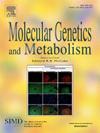Acid sphingomyelinase deficiency: Laboratory diagnosis, genetic and epidemiologic aspects of a 50-year French cohort
IF 3.7
2区 生物学
Q2 ENDOCRINOLOGY & METABOLISM
引用次数: 0
Abstract
Objectives
Laboratory diagnosis of acid sphingomyelinase (ASM) deficiency (ASMD) was implemented in France in the early 1970s. The aims of this study were (i) to review the combined use of successively developed strategies - enzyme measurement, genetic testing, and biomarkers analysis – and (ii) to describe the mutational spectrum and epidemiological characteristics of a large patient cohort followed in French hospitals.
Results
During the 1974–2023 period, 271 patients with ASMD (238 families) were diagnosed. The chronic visceral form (historical Niemann-Pick type B) constituted 68 % of the cases, the infantile neurovisceral (type A) form 23 %, and the chronic neurovisceral (type AB) form 9 %. Profoundly deficient ASM activities were constantly observed in the neuronopathic forms. Elevated plasma concentrations of LysoSM and LysoSM-509/PPCS proved useful to comfort interpretation of ASM activities near cut-off found in leukocytes or dried blood spots of some patients with ASMD type B. Although not specific, LysoSM-509/PPCS appeared as the most sensitive biomarker. The spectrum of SMPD1 variants was investigated in 183 families. A total of 93 different SMPD1 variants (26 novel ones) was identified (58 % missense, 19 % frameshift, and 12 % nonsense ones). The proportion of null variants was much larger in ASMD type A (63 %) than in type B (24 %). In type AB, c.1177 T > G (p.Trp393Gly) contributed 32 % of the mutant alleles, most patients having Romani or Northwestern-Balkanic roots, while c.880C > A (p.Gln294Lys) only accounted for 9 %. Homoallelic variants in neuronopathic patients allowed genotype/phenotype correlations. In type B, c.1829_1831delGCC (p.Arg610del) represented 57 % of alleles, with a wide diversity of other variants. Among type B families, approximately one-third had a North African origin, and this variant accounted for 91 % alleles in this subgroup, compared to 40 % in non-North-African families. In patients homozygous for p.Arg610del (n = 69), the age at biological diagnosis was significantly higher (34.0 years; IQR 7.4–45.3) than in patients with either one (n = 41) [4.3 years; IQR 2.77–18.30] or no such allele (n = 43) [6.3 years; IQR 2.2–31.7]. A further observation was the proportional increase in the number of type B patients diagnosed after the age of 30 years since 2015. This nearly complete national cohort allowed a tentative evaluation of (minimal) incidences at birth as follows: ASMD (all clinical forms): 0.70/100,000; type B: 0.48/100,000; neuronopathic types (A and AB): 0.22/100,000.
Conclusions
This comprehensive cohort (i) summarizes the real-life experience of laboratory diagnosis of ASMD in two expert centres, (ii) confirms the high frequency of the p.Arg610del allele in France and discloses some characteristics of patients homozygous for this variant; (iii) provides for the first time data on the distribution, mutational spectrum and tentative incidence at birth of the three clinical phenotypes of ASMD in France.
求助全文
约1分钟内获得全文
求助全文
来源期刊

Molecular genetics and metabolism
生物-生化与分子生物学
CiteScore
5.90
自引率
7.90%
发文量
621
审稿时长
34 days
期刊介绍:
Molecular Genetics and Metabolism contributes to the understanding of the metabolic and molecular basis of disease. This peer reviewed journal publishes articles describing investigations that use the tools of biochemical genetics and molecular genetics for studies of normal and disease states in humans and animal models.
 求助内容:
求助内容: 应助结果提醒方式:
应助结果提醒方式:


